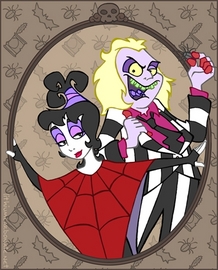Toronto’s Distillery District

The process of
rationalization and
mass production are applied not only to our widespread fastfood chains, but also to other businesses and retail stores. A society that is increasingly run like a fast-food restaurant is said to be McDonaldized. There are reasons why aspects of Mcdonaldization have become more and more appealing to industries worldwide and have been integrated into their systems and manufacturing process. Essentially, the concepts behind it are so effective – they yield results, and most importantly, money. The strategies are “rationalized” based on quantity over quality, and everything is so controlled, that it subdues any room for individuality, authenticity, creativity, and the prioritization of quality over quantity



When I think of anything that hasn’t been Mcdonaldized, any experience that holds the key ingredients not permitted in the “rationalized” businesses (creativity, individuality etc.) I remember restaurants that are family owned, have almost zero branches, boutiques, small art galleries and workshops, cafes that are everything a Starbucks is not. I remember my visit to
Toronto’s Distillary District that dates back to 1832 and is an official national historic site of Canada. There is culture on every corner, wherever you look you see heritage, history, art, individuality, creativity, and authenticity. It’s in the architecture itself, the buildings, the cafes, the restaurants, the art galleries, the shops, the stalls, the whole “feel” of the place, that opposes everything McDonaldization is.


The main experience that came to my memory in the
Distillery District, was the everlasting impression of a chocolate café called
Soma that is unlike any I have ever been to. It is nothing like Maya, and Chocolate Bar here in Doha, it is truly an exotic, rich, and authentic café that offers just exotic, rich, authentic, home-made chocolate, gelato, and other chocolate drinks and foods. When you first step inside, you know you are about to experience something different. The first of your senses to detect that is your instant whiff of delightful and mouth-watering chocolate…rich, fresh, home-made, hand-crafted chocolate.

My mom didn’t know where to start – she wanted their famous Mayan hot chocolate, chocolate espresso, their “famous” Mayan hot chocolate, she wanted to dive into the organic flavorful chocolate of all kinds. This was different. It’s not the chocolate you get in your local supermarket. Everything from the shopping experience, seating, servicing, packaging, display, and interior to the ash basket/tray provided for you to place the chocolate you want to buy on so that the chocolate doesn’t melt. I still remember the friendly hand-written note above the stack of oriental ash trays “Chocolate melts at body temperature. Please use our lovely trays to place your selections”. I’d place my “selections” on my head if I have to!
Then…you get to the counter…more small batches of heavenly looking chocolates, some stuffed with organic blueberry, or raspberry, or strawberry, or some berry I haven’t even heard of…but it all looks good, each kind has a small description in front of it…
White chocolate, dark chocolate, extra dark chocolate, extra extra dark chocolate, milk chocolate….
At this point my little sister and I were about to loose it….

When I finally settled on the Caramel Kiss Truffle and Almond Cluster Dark Peruvian, the kind lady at the counter, put each small piece into individual boxes. The way she held them with her gloves and tissue paper, is nothing like the way your McDonald’s server would carry your fries or soda…she was holding them like it took 7 hours to make one of them, like the genius of five people went into its making…

When you sit to enjoy your rare treat, you are left to gaze into the kitchen and preparation room, all surrounded by glass…these guys are obviously not trying to hide their “backstage”….and its no wonder why. They use old school chocolate machines and tools and hand-crafting methods, small batch production. All original, all authentic. It definitely takes more than a push a push of a button, or a pop up on a screen in order to make what Soma Chocolatemaker does. It takes skill. This is not a de-skilled, dumbed-down process of mass-production of food. There are no conveyor belts, deep fryers, fast-paced robotic processes. Each piece of chocolate is made skillfully and carefully.

The
four dimensions of McDonaldization: efficiency, calculation, predictability and control, are not the foundations of such a business. Quality obviously comes before quantity. Their products are made in small batches, fresh, daily, and are limited. They are not selling you Big Chocolates, but small savory samples, with the option of buying more bulk forms of whole bars of various kinds, but of the same high quality and superb taste. In terms of efficiency, it is not really an example of producing as much chocolate in less time, otherwise we’d be seeing the crafters surrounded by high-tech machinery that does everything in huge amounts – fast. Instead, we see more hand work than machinery, and not the mass-production technology and machines, but those that remind you of artisan times. It definitely does not substitute human labor for non-human labor, there is no real automation or de-skilling of the workforce, since it depends greatly of the skill of hand-craft chocolatiers. It is not a process of standardized outcomes, if anything is standardized, or maintained, it is the high quality of their products.

It is probably obvious by now, that I can talk about this place for ever, but the point is our society is being McDonaldized more and more, everyday, that such experiences are becoming so rare, and unlikely. When I think of examples here in Doha of a somewhat similar experience to the Distillery District in Canada, I think of projects that aim to preserve, revive and protect heritage and culture, those that try to oppose the fast commercialization and westernization, places like Souq Waqif, Katara Cultural Village, Islamic Arts Museum.
There is definitely an interest growing out there to combat the expansion of McDonaldized services and industries, and big box retailers, my hope is that these opposing groups will continue to grow.











.jpg)

















 I saw the large recognizable Hardees star from a distance and my brain suddenly decided i was craving burgers, perhaps it was because of all the
I saw the large recognizable Hardees star from a distance and my brain suddenly decided i was craving burgers, perhaps it was because of all the 

 I also went to
I also went to 


















